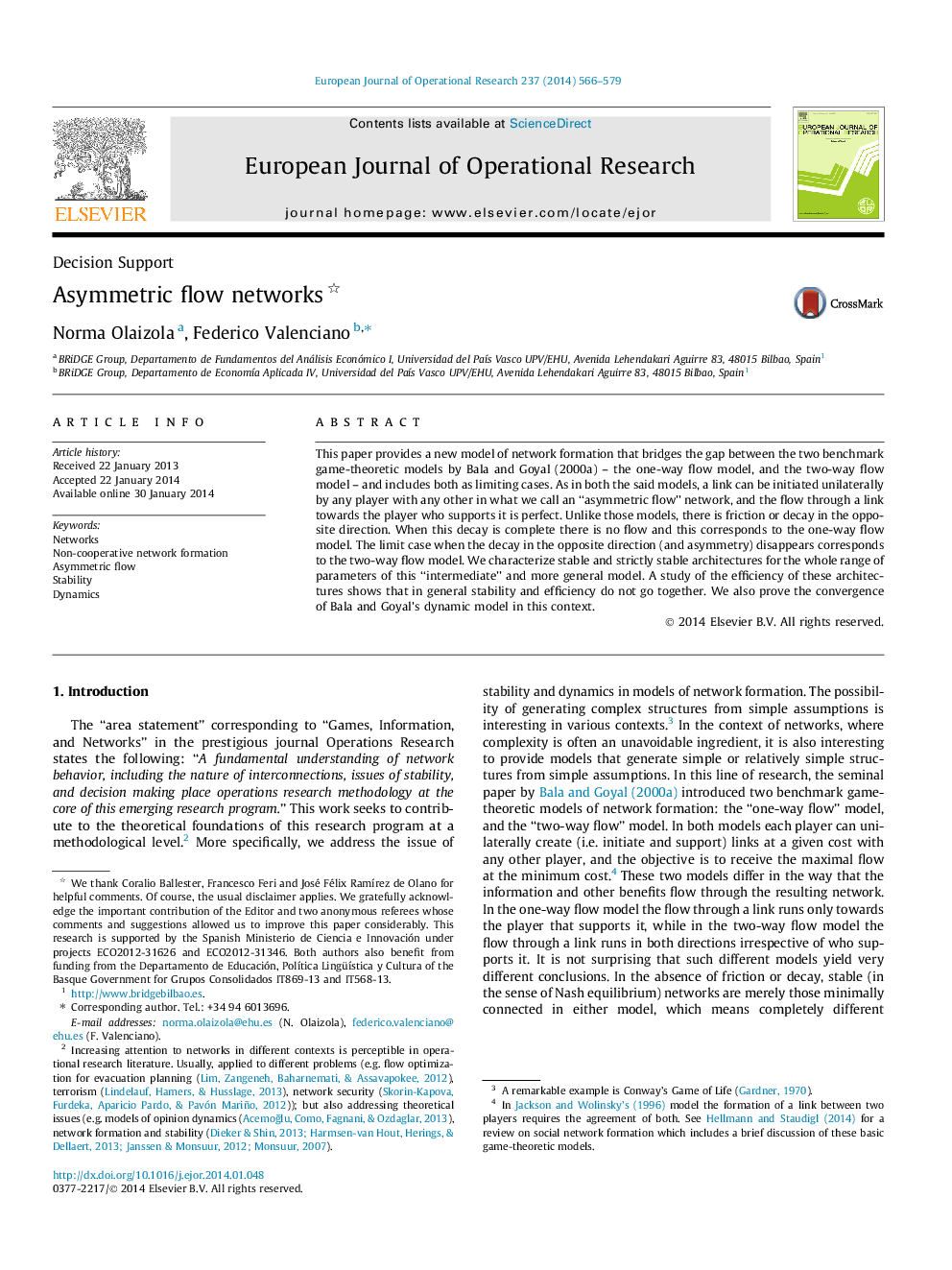| کد مقاله | کد نشریه | سال انتشار | مقاله انگلیسی | نسخه تمام متن |
|---|---|---|---|---|
| 478143 | 1446025 | 2014 | 14 صفحه PDF | دانلود رایگان |
• A model of network formation bridging the gap between Bala and Goyal’s two-way and one-way flow models is introduced.
• Flow through a link is perfect towards a player supporting it, while there is some friction in the opposite direction.
• In this setting Bala and Goyal’s models and results appear as extreme particular cases.
• Nash and strict Nash stable networks for this new model are characterized.
• Convergence to a strict Nash network for a dynamic model is also proved.
This paper provides a new model of network formation that bridges the gap between the two benchmark game-theoretic models by Bala and Goyal (2000a) – the one-way flow model, and the two-way flow model – and includes both as limiting cases. As in both the said models, a link can be initiated unilaterally by any player with any other in what we call an “asymmetric flow” network, and the flow through a link towards the player who supports it is perfect. Unlike those models, there is friction or decay in the opposite direction. When this decay is complete there is no flow and this corresponds to the one-way flow model. The limit case when the decay in the opposite direction (and asymmetry) disappears corresponds to the two-way flow model. We characterize stable and strictly stable architectures for the whole range of parameters of this “intermediate” and more general model. A study of the efficiency of these architectures shows that in general stability and efficiency do not go together. We also prove the convergence of Bala and Goyal’s dynamic model in this context.
Journal: European Journal of Operational Research - Volume 237, Issue 2, 1 September 2014, Pages 566–579
